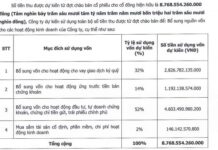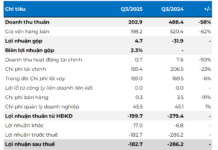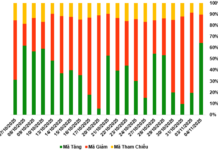According to a report by the Ministry of Agriculture and Rural Development, as of the end of June this year, the country harvested 3.48 million hectares of rice, up 0.5% compared to the same period last year; the average yield was 67.1 tons/ha, an increase of 0.7 tons/ha. The production on the harvested area reached 23.3 million tons, up 1.6%.
Accordingly, the country has exported 4.68 million tons of rice, earning $2.98 billion. Compared to the same period in 2023, rice exports increased by only 10.4% in volume but surged by 32% in value due to high export prices.
Data from the Vietnam Food Association showed that on June 26, the export price of 5% broken rice was $657/ton, while 25% broken rice stood at $543/ton.

In the first half of 2024, Vietnam spent approximately $670 million on rice imports.
The report from the Ministry of Agriculture and Rural Development also stated that rice was among the top 5 agricultural products with a high trade surplus, reaching $2.31 billion, up 27% over the same period last year. In other words, in just the first half of this year, the country spent about $670 million on rice imports.
In 2023, the country also spent nearly $860 million on rice imports from other countries, mainly from Cambodia and India. According to statistics from the General Department of Customs, the types of rice imported into Vietnam are mostly lower-quality rice, such as broken rice and other white rice. This rice is imported for the production of cakes, buns, and animal feed.
Why does Vietnam import rice?
In a report by the Ministry of Industry and Trade, due to the impact of objective and subjective factors, Vietnam has imported certain types of rice to meet domestic demands, such as for animal feed production, beer brewing, and exporting higher-quality rice. Imported rice is often cheaper than domestic rice, and sometimes, certain types of rice are not produced in the country but are in demand in the market.
Mr. Nguyen Van Thanh, Director of Phuc Thanh IV Production and Trading Company, told Tien Phong that the domestic demand for low-grade rice is evident, as it is used for making cakes, buns, and animal feed. This type of rice is commonly produced and has a high yield in India, but it is very affordable, similar to Vietnam’s IR50404 rice that was widely cultivated in the past.

Vietnam imports low-grade rice while exporting higher-quality rice.
“For dry rice types like IR50404, before 2015, Vietnam used to plant a lot, but it was difficult to sell, so the authorities advised switching to higher-quality rice cultivation. As farmers shifted to the higher-quality segment, there was a shortage of low-grade rice, and even if it was planted, the price was too low, so farmers abandoned this rice type, hence the need to import,” said Mr. Thanh.
The company’s representative once proposed that an import tax could be imposed to limit rice imports, along with restructuring domestic production. In regions where high-quality rice is less efficient, they could revert to growing lower-quality rice to compensate for the imported rice volume, thus balancing the rice segments and meeting domestic demands.
In the 2023-2024 crop year, Vietnam ranked among the top 3 rice exporters globally, after India and Thailand. The Ministry of Agriculture and Rural Development forecasts that the country’s rice production in 2024 is expected to reach 43 million tons. With this output, domestic consumption needs and exports of over 8 million tons can be secured.
Vietnam’s $4.6 billion ‘Treasure’ triumphs, neighboring countries receive bad news
Vietnam’s “treasure” continues to maintain its top position in the world. Meanwhile, neighboring countries are eagerly awaiting more positive signals.
Prime Minister discusses investment, production, and business with 19 corporations and conglomerates
On the morning of February 5th, Prime Minister Pham Minh Chinh chaired a working conference with the State Capital Management Committee in Enterprises and 19 groups and corporations to discuss the implementation of production and business activities in 2024, as well as promoting investment for economic and social development.
Vietnam remains Korea’s third largest trading partner despite a decrease in imports and exports
For the second consecutive year, Vietnam has surpassed Japan to become South Korea’s third largest trading partner, despite a decline in both exports and imports from Vietnam.







































